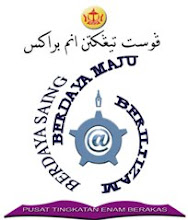Status-all members of society are accorded a social position by culture.
Achieved status-A status entered after birth and usually due at least in part to individual behaviour.
Ascribed status-A status fixed at birth usually by inheritance or biology. E.g. gender is a fixed characteristic which results in women occupying low status roles in some society.
Roles-a set of norms usually attached to a status. E.g. a doctor’s role in maintaining the confidentiality of patients and professional behavior.
Values-widely accepted beliefs that something is worthwhile and desirable. E.g. high value is place in human life.
Norms-the essential values that are put into practice. I.e. specific rules of behavior relative to specific social situations. E.g. it is generally expected that people wear black at funerals in the UK.
Culture- way of life of a society; it is made up of the shared values, norms and beliefs of a society as well as the shared meanings and symbols such as languages.
Culture is not absolute, fixed and universal. No one culture is superior to or inferior to one another. They are merely different; cultural relativity.
Social cement-society maintained and the structure or pattern is continued by people being bonded together.
Bourgeouisie-ruling clas, people with high status who owns the means of production.
Proletariat-subject class, peole who don’t have power and are under control of the bourgeoisie.
Ideology-a set of beliefs and values which disguises the truth and distorts reality.
Ruling class ideology-workers become fully aware of their exploitation.
Capitalism-A type of society in which the private ownership of the means of production is the dominant form of providing the means to live.
False consciousness-prevents people from seeing the reality of their situation.
Economic determinism-whoever owns and controls the economy determines the rest of how society is patterned.
Social control-society dominated by rules laid down by the powerful.
Social problems-issues concern to and for society (e.g. crime,poverty)
Sociological problems-issues concern in research.
Social policies-government policies that are directed towards meeting the social needs of the population (e.g. welfare)
Race-a set of social relationships which allow individuals and groups to be located, and various authorities or competencies assigned, on the basis of biologically grounded features.
Ethnicity-cultural practices and outlooks of a given community of people that set them apart from themselves.
Prejudice-opinions or attitudes held by members of one group towards another.
Racism-prejudice based on socially significant physical distinctions, someone who believes that some individuals are superior or inferior to others on the basis of racialized differences.
Discrimination- actual behavior towards another group or individual that involves treating them unfairly because of a negative view of certain of their characteristics.
Stereotypes-fixed and inflexible characterizations of a group of people. Stereotypes are often applied to ethnic minority groups, such as the notion that all black men are naturally athletic or that all East Asians are hardworking, diligent students. Some stereotypes contain a grain of truth, but are highly over-exaggerated.

